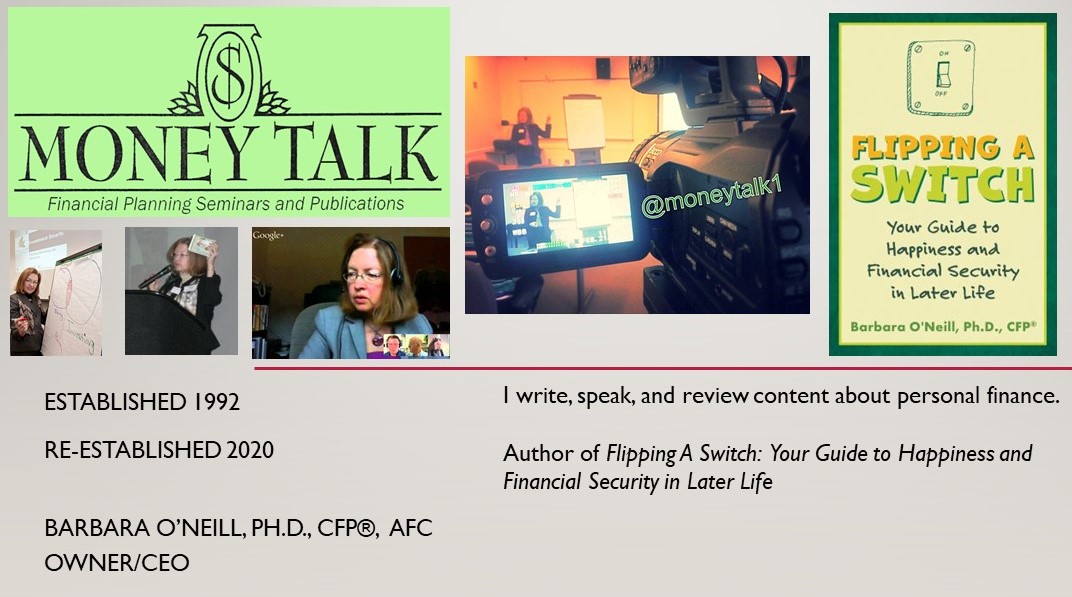In earlier posts, I discussed ten upsides of inflation and inflation-fighting strategies. Inflation continues to be in the news so below are some additional insights that I shared recently at a class about inflation-fighting strategies for older adults.
UPH is Real- Many people are
feeling the effects of “unexpected price hikes” (UPH), a term coined in a
T-Mobile ad. In informal polls of my students, LinkedIn connections, and
Facebook friends, higher expenses that stood out to them were food (e.g., $5+
for 12 eggs!), services (e.g., lawn care, tax preparer, hair dresser), natural
gas for home heating, electricity, and auto and homeowners insurance.
CPI Calculation- The consumer
price index (CPI) that measures inflation is annualized over 12 months (e.g.,
January 2022 to January 2023) so there is no need for seasonal adjustments. A
disadvantage of doing this, however, is that it emphasizes recent history
rather than current events when there are abrupt changes. Right now, the CPI is
averaging a higher past rate with a lower current rate. In 2021, it was the
reverse (i.e., a lower past rate with a higher current rate).
The Rule of 72- For planning
purposes, use The Rule of 72 to calculate how quickly prices, as well as
investment account balances, will double. Simply divide 72 by an inflation rate
to determine the number of years to double the price of an item. For example,
at 6% inflation, prices will double every 12 years so a $40,000 new car now
would cost approximately $80,000 in 2035. Good news: the historical
inflation rate
from 1926- 2021 has been only 2.9%.
Personal Inflation Rate- The official
government CPI rate announced each month is not the same as people’s personal
inflation rate which varies according to age, income, health status, and other
variables. For example, young adults may spend more than older adults on gas
(commuting to work) and housing (mortgage payments) while older adults might
spend more on health care and travel and own a home that is mortgage-free. Personal
CPI matters the most.
Impacts by Income Category- Inflation
typically impacts lower earners the most because high prices consume a larger
share of limited incomes. Recent data suggest, however, that middle-income
earners
were hit the hardest by inflation. Low-income households received government
payments and large wage increases and high-income households had sufficient
income and assets to absorb price hikes. Middle-income earners lost the most
purchasing power.
Investment Impacts- Investors are
understandably concerned about recent persistent inflation and poor market
performance resulting in lower balances in retirement savings plans. Younger
investors can take advantage of market downturns to buy stocks “on sale.”
Retired investors who have enough money to pay living expenses from guaranteed
income sources (e.g., pensions, Social Security, annuities) can “ride it out.”
Retirees living off invested assets may want to cut expenses, reduce cash
withdrawals, or tap cash assets to avoid selling stocks now.
Cash Asset Options- One of the
positive outcomes from inflation is increased yields on cash assets resulting
from seven rounds of Federal Reserve interest rate increases in 2022. With the
Fed Funds Rate over 4%, there is no need to earn less than 1% on savings.
Options to consider include Series I bonds (6.89% return through 4/30/23),
fixed annuities, brokered CDs, U.S. Treasury bills, and online bank savings and
money market accounts.
This post provides
general personal finance or consumer decision-making information and does not
address all the variables that apply to an individual’s unique situation. It does
not endorse specific products or services and should not be construed as legal
or financial advice. If professional assistance is required, the services of a
competent professional should be sought.








